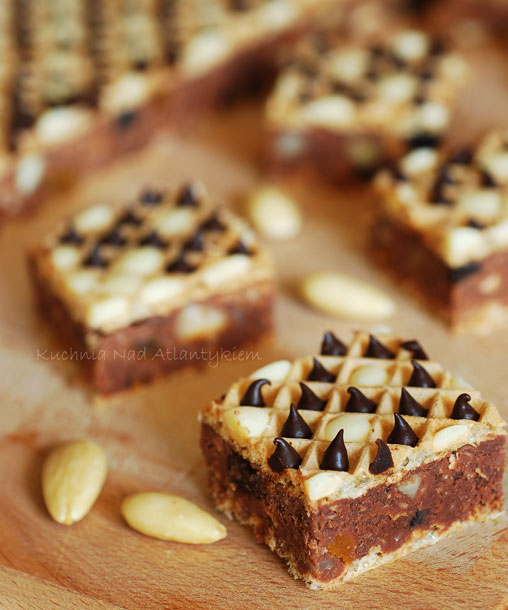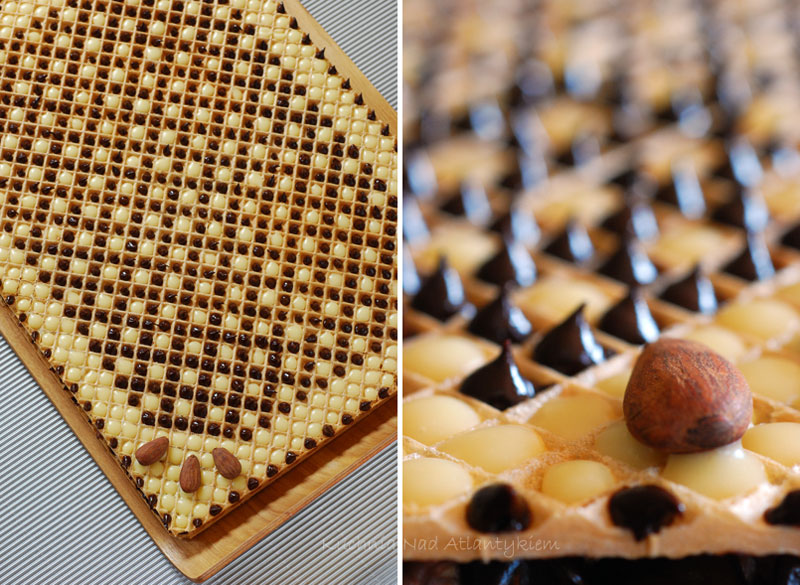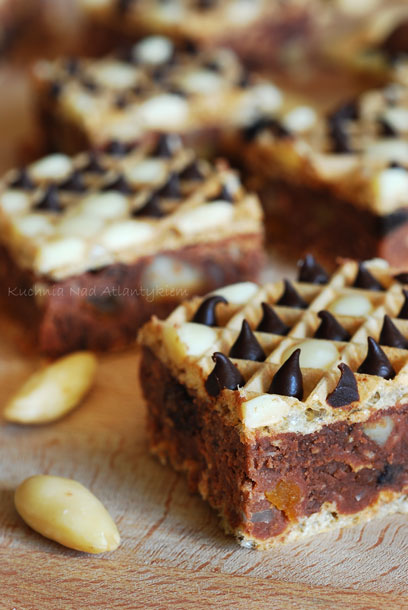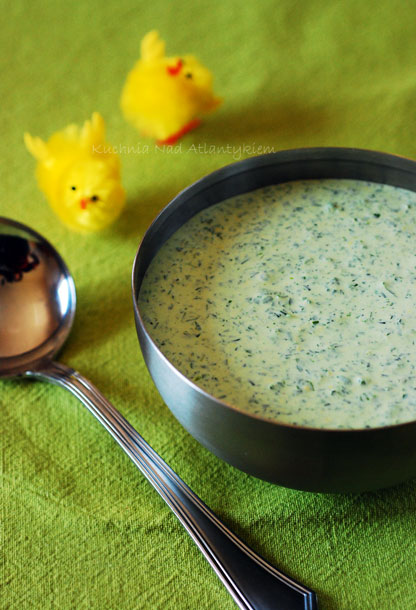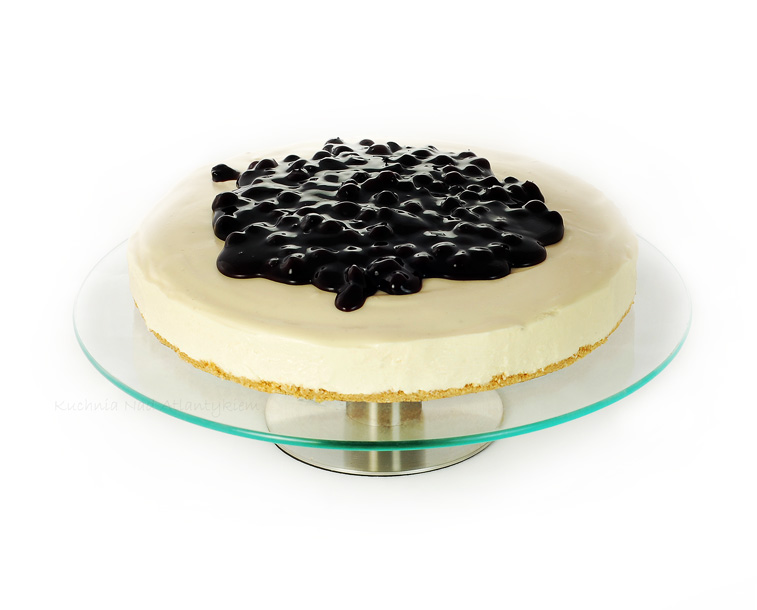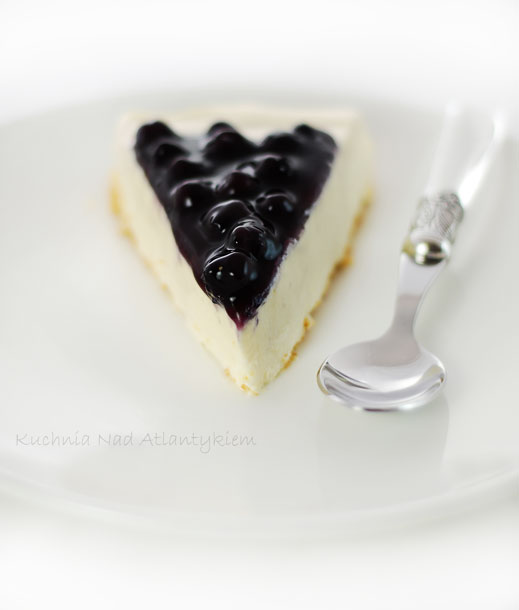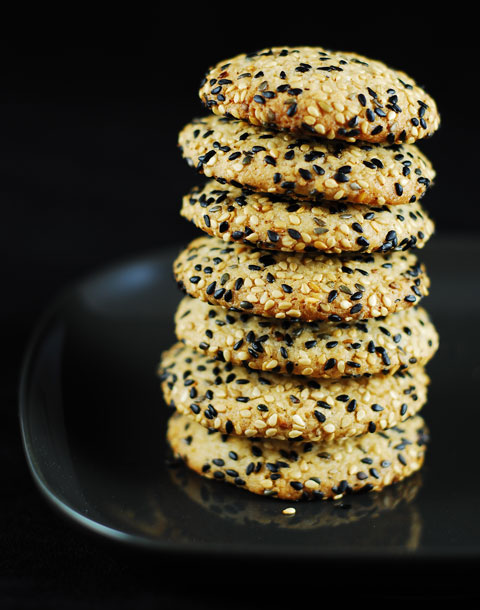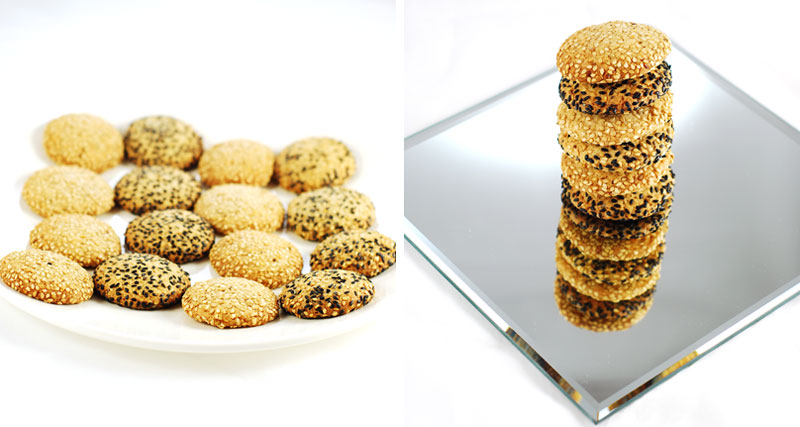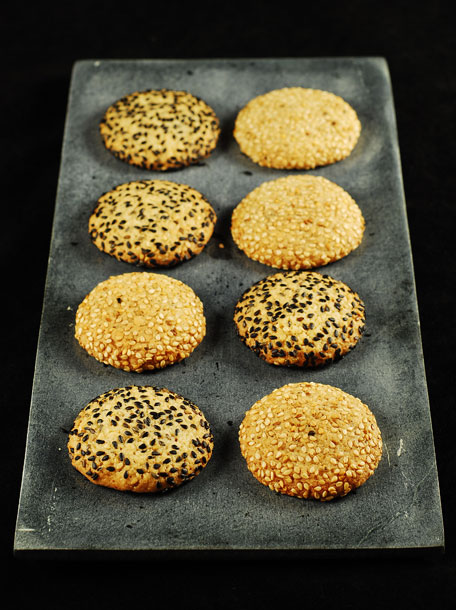Mazurek is a classic Polish Easter dessert. About 3-4 cm high, rectangular, oval or round. Usually made with pastry crust or on wafers (the kind used for ice creams, only flat). As for the filling - it is always quite sweet and there is a great variety of classic fillings.
But the most crucial aspect in this cake is the decoration. The mazurek is always very elaborated and usually features some Easter motives - eggs, chicks, bunnies, catkins ( here you have two photos of quite typical mazurek). Cake decorating is always a huge problem for me so this time I made only a simple geometric pattern, filling wafer holes with chocolate and almonds.
My mazurek has a rich chocolate filling studded with nuts, almonds and dried fruits. It is usually the first cake to disappear from our Easter table. :) Enjoy !
Chocolate Mazurek
3 large rectangular thin wafers
3/4 cup full fat milk
3/4 cup sugar
250 g butter
500 g (18 oz) whole milk powder
3 tablespoons dark cocoa
2 tablespoons nutella spread (or other chocolate- hazelnut spread)
50 g (2 oz) unsweetened coconut flakes
150 g (5 oz) approximately chopped nuts (walnuts, hazelnuts, almonds) and
100 g (4 oz) prunes and dried apricots cut into fine strips
100g (4 oz) raisins (dark and light, soaked in rum for 1 hour)
For decoration:
100 g (4 oz) white chocolate
100 g (4 oz) dark chocolate
2 tablespoons butter
6 tablespoons pouring cream 12-18% fat
a few whole almonds
Bring to a boil milk with sugar (the latter must be completely dissolved - it is important!). Add the butter and mix until it melts. Leave to cool. Add powdered milk and cocoa and mix until everything is smooth and thick. Add nutella and mix again. Incorporate coconut flakes, one finely crushed wafer, nuts and dried fruits. Spread the filling evenly on one wafer, cover with the other. Put a large chopping board and a pile of books on top of the cake. Leave on the counter overnight. After decorating you have to store it in the refrigerator, wrapped tightly in aluminium foil.
Decoration:
Melt each chocolate separately with half of the butter and cream in a microwave oven ( 180 W for about 1-2 minutes; remove, mix to check if it melted, and if necessary put it again to microwave for several seconds) or in a water bath. Fill 2 pastry sleeves with 2 kinds of chocolate and decorate your cake. Insert some almonds in soft chocolate.
3 large rectangular thin wafers
3/4 cup full fat milk
3/4 cup sugar
250 g butter
500 g (18 oz) whole milk powder
3 tablespoons dark cocoa
2 tablespoons nutella spread (or other chocolate- hazelnut spread)
50 g (2 oz) unsweetened coconut flakes
150 g (5 oz) approximately chopped nuts (walnuts, hazelnuts, almonds) and
100 g (4 oz) prunes and dried apricots cut into fine strips
100g (4 oz) raisins (dark and light, soaked in rum for 1 hour)
For decoration:
100 g (4 oz) white chocolate
100 g (4 oz) dark chocolate
2 tablespoons butter
6 tablespoons pouring cream 12-18% fat
a few whole almonds
Bring to a boil milk with sugar (the latter must be completely dissolved - it is important!). Add the butter and mix until it melts. Leave to cool. Add powdered milk and cocoa and mix until everything is smooth and thick. Add nutella and mix again. Incorporate coconut flakes, one finely crushed wafer, nuts and dried fruits. Spread the filling evenly on one wafer, cover with the other. Put a large chopping board and a pile of books on top of the cake. Leave on the counter overnight. After decorating you have to store it in the refrigerator, wrapped tightly in aluminium foil.
Decoration:
Melt each chocolate separately with half of the butter and cream in a microwave oven ( 180 W for about 1-2 minutes; remove, mix to check if it melted, and if necessary put it again to microwave for several seconds) or in a water bath. Fill 2 pastry sleeves with 2 kinds of chocolate and decorate your cake. Insert some almonds in soft chocolate.
